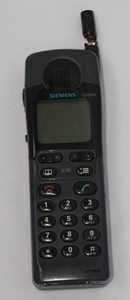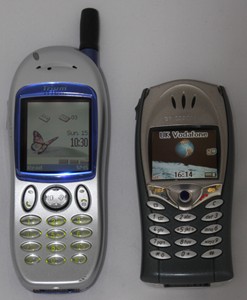The first phones with colour screens

Today phones with colour screens are commonplace, but before 1997 all mobile phones presented information in monochrome. The very first mobile phones had red LEDs, but once LCD displays came along they were only ever black and grey, until Siemens launched the Siemens S10, the first phone with a colour display.
The Siemens S10 had a text display which used four different colours, but apart for the colour display it was unremarkable. Marketed as a high end business phone it was bigger and heavier than rivals from Nokia and Ericsson and offered little extra apart from the colour display, which in reality was nothing more than a gimmick. The S10 failed to make much impression the market .
A few years later the UK mobile phone industry was in trouble. Everyone who wanted a phone could afford one and prices of basic handsets were in free fall. If mobile handsets remained just phones, then they would become a throwaway commodity, built cheaply and sold cheaply, or given away with little profit for the manufacturer or network provider.
If manufacturers wanted to sell phones for premium prices, they needed offer more than just a phone.

Apart from the Siemens S10, phones in the last century were monochrome. Would colour screens be enough to get people to ditch their old phone and buy a new one? Manufacturers would clearly need something better than colours and a text only display.
What about a phone with full colour graphics?
Two of the hottest gadgets on the 2001 Christmas list were the Ericsson T68m and the Trium Eclipse. Both had colour screens which displayed acceptable images using a 256 colour palette. The Trium was the first on the market in mid November 2001 at £149 with a contract.
The Trium was the first, but the Ericsson was much better. It was the last phone sold under the Ericsson brand, but this new phone was all about the present not the past. It was small, stylish and sexy and its large colour screen put it ahead of the Nokia 8310, the leading consumer phone of the time.
The Ericsson T68m pointed the way to the future of mobile phones. Colour screens meant that phones could display pictures. The Ericsson T68m was able to take a firmware upgrade in 2002 making it capable of sending and receiving reasonable resolution digital images using new technology called Multimedia Messaging Service or MMS. It was a precursor to the next development: camera phones.
Article by Steven Braggs, November 2011, corrections June 2012 and May 2013
Comments (2)
Interesting article, I remember lusting after the Eclipse!